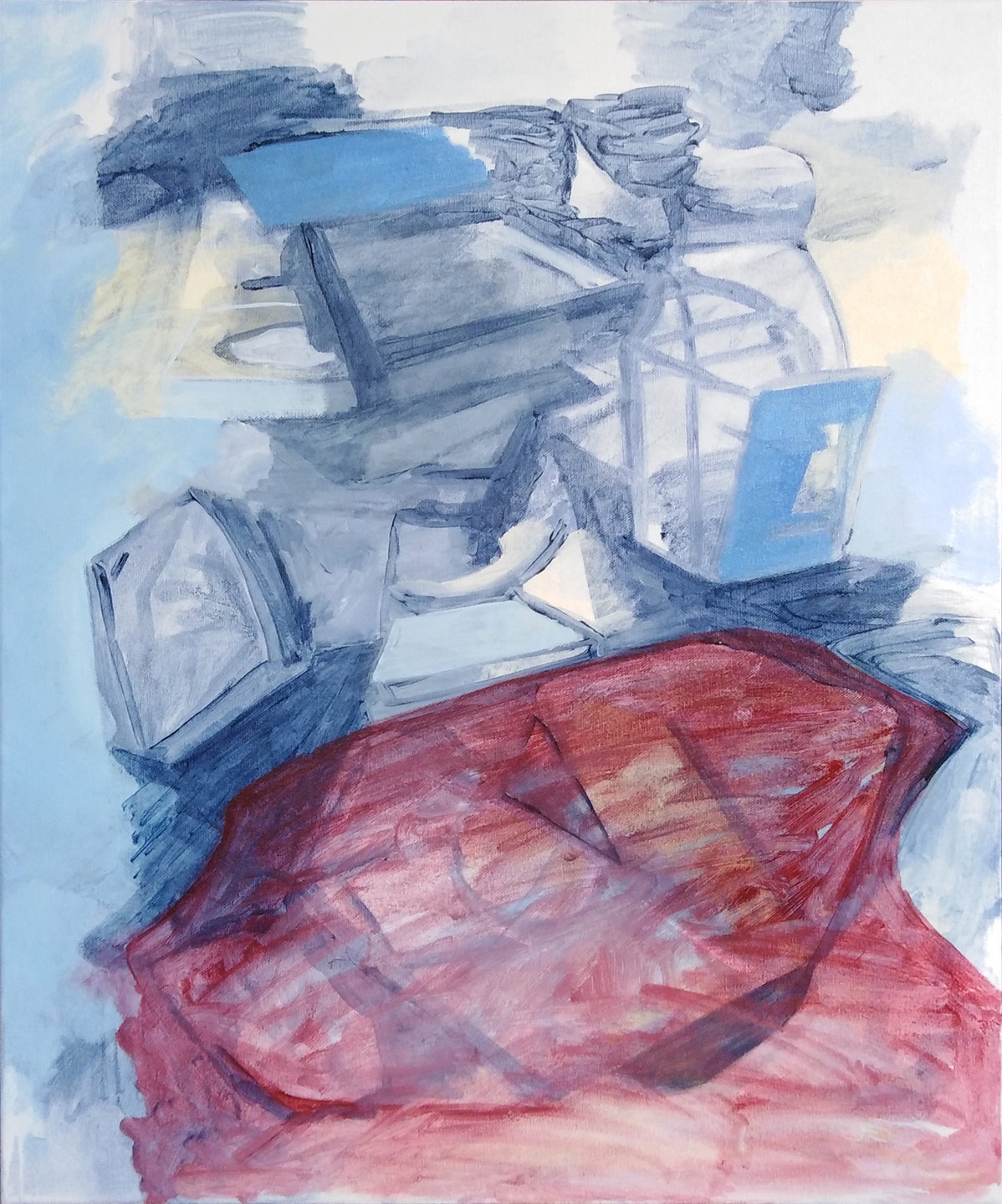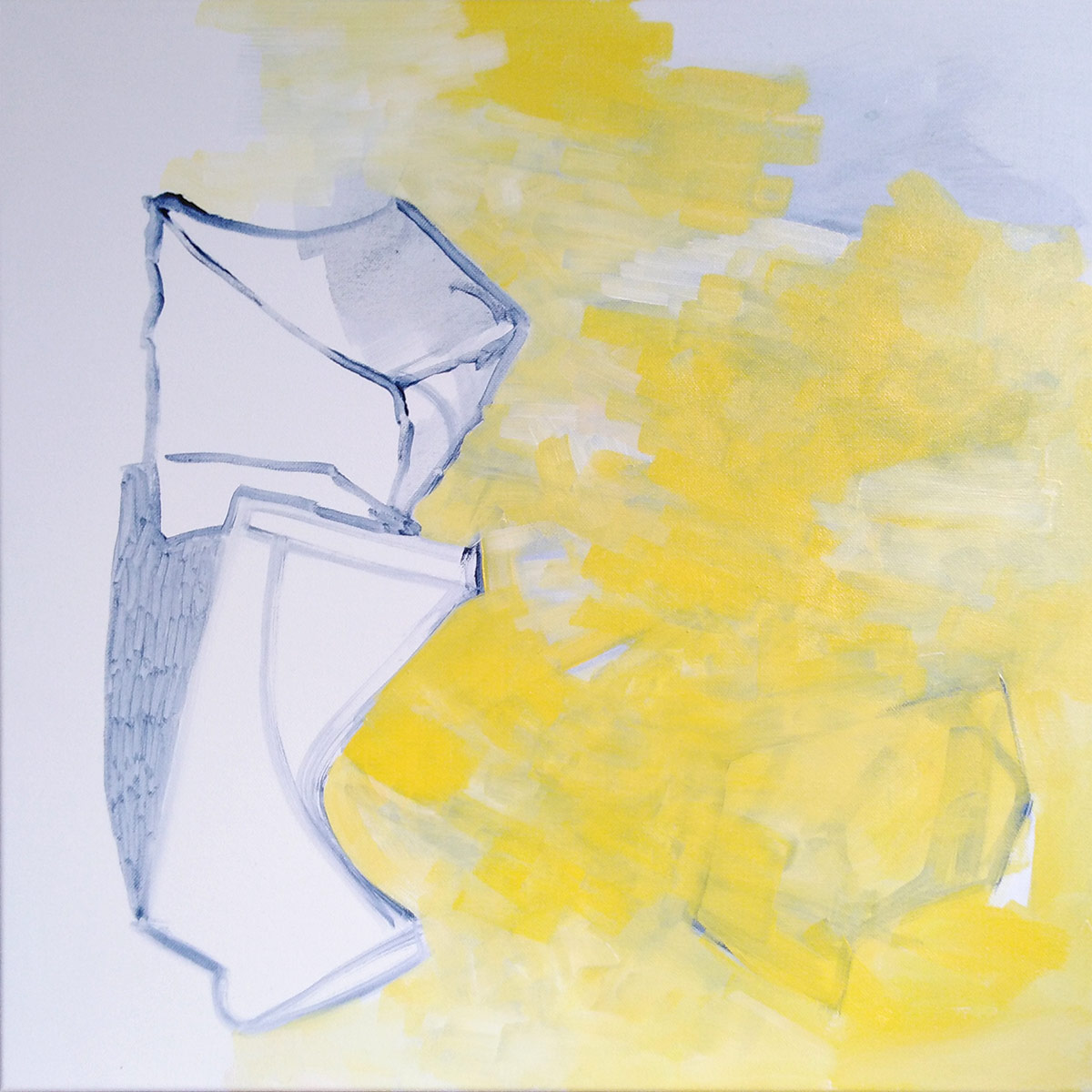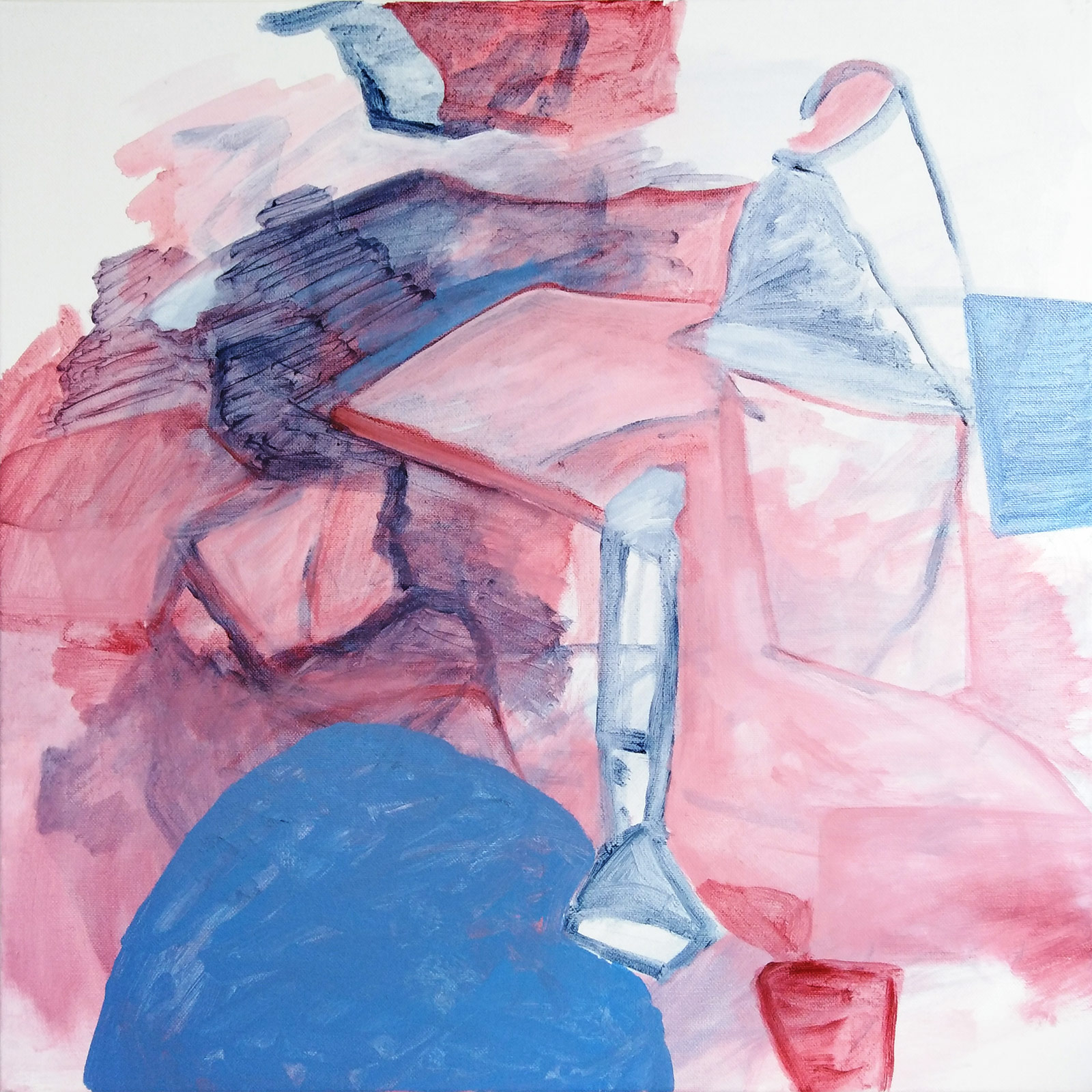Your future our clutter
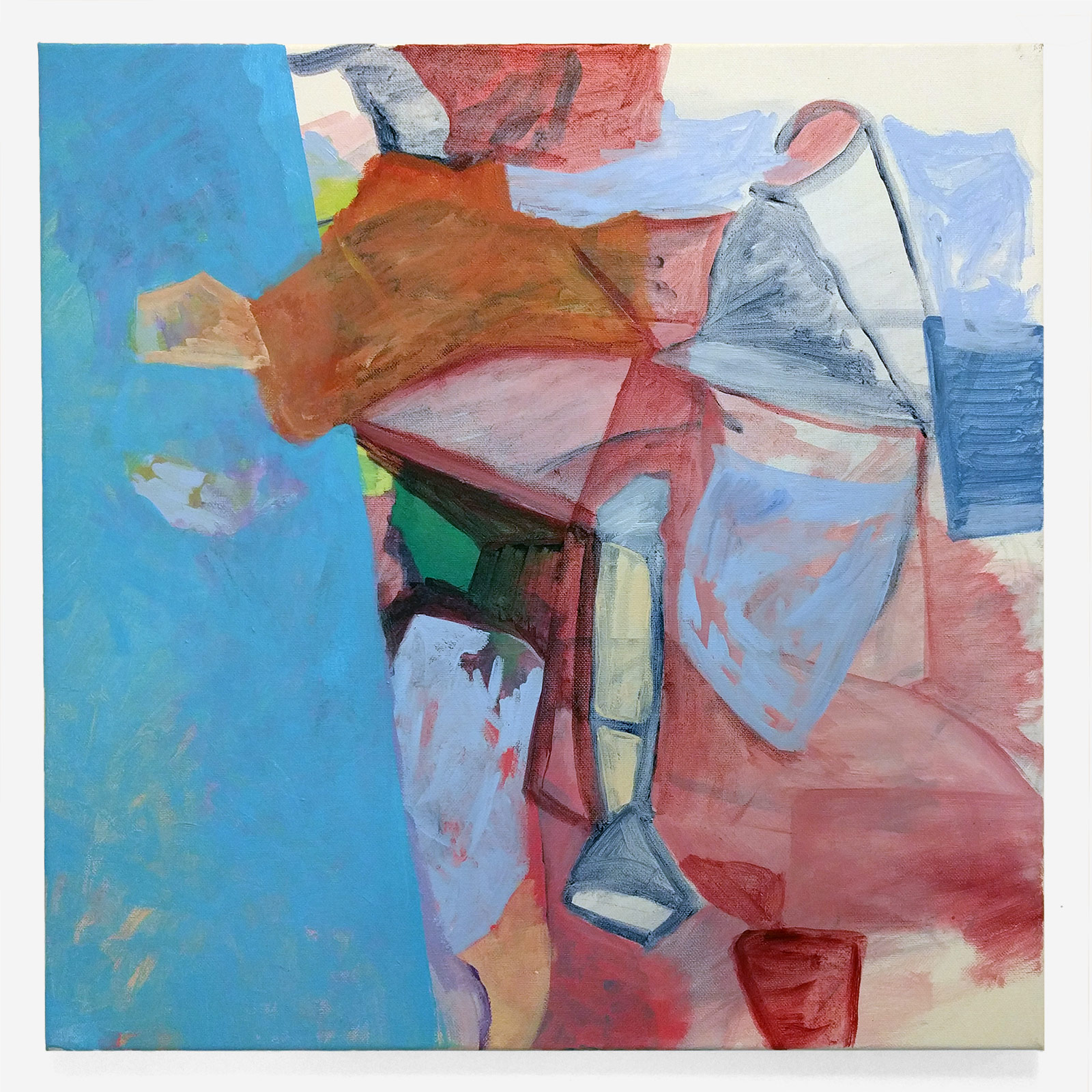
Work in progress
Monday evening 10 September 2018
I’m really enjoying the loose painting in the top right hand quadrant of the work and want it to remain for as long as possible. In the middle I imagine the forms becoming more clearly defined, though as ever, this may change completely once my brush hits the canvas.
Beginning to think of titles – Your future our clutter seems a good place to start, or maybe just Clutter.
And if you were wondering, this is what the painting looked like earlier in the day.
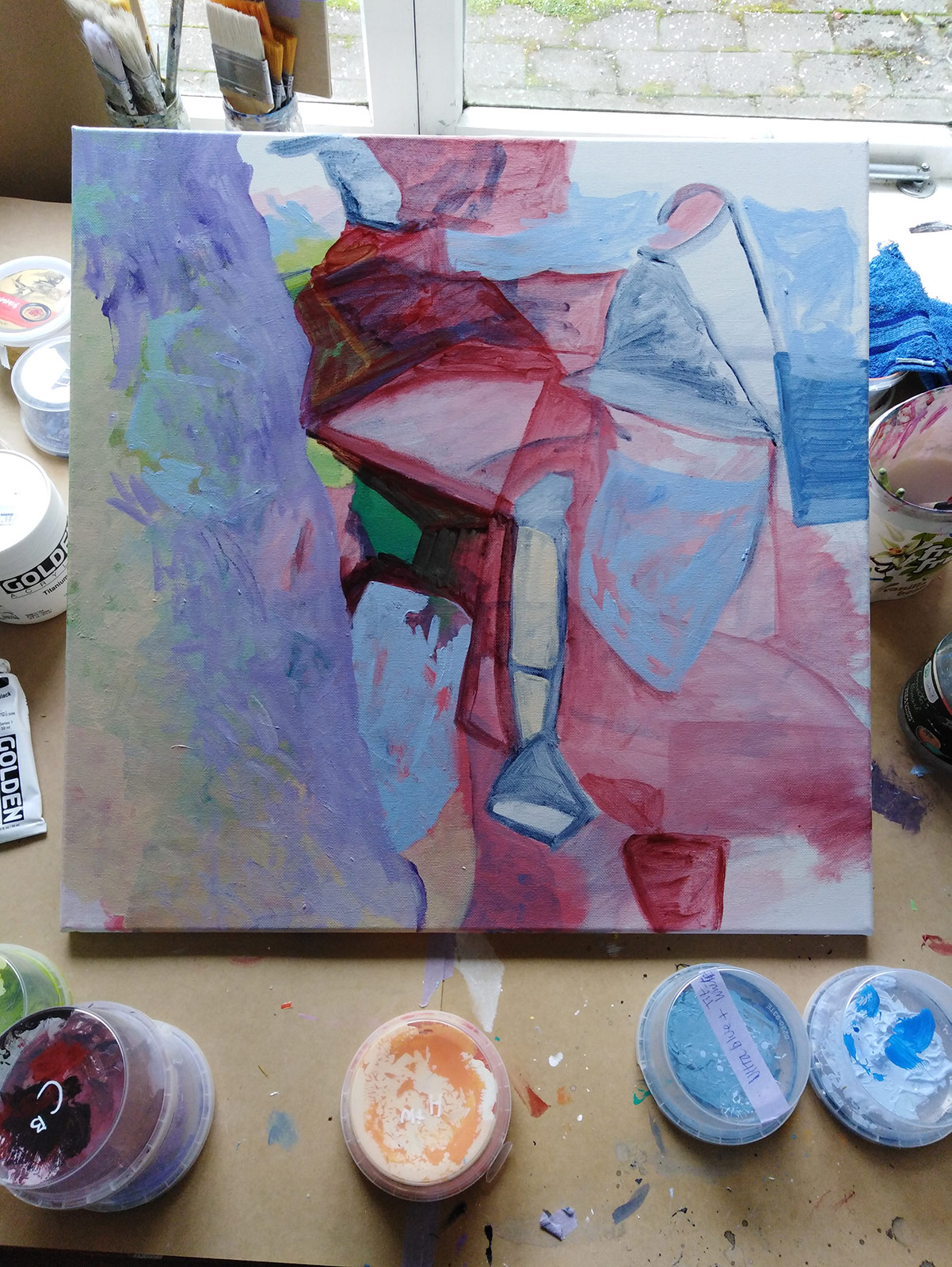

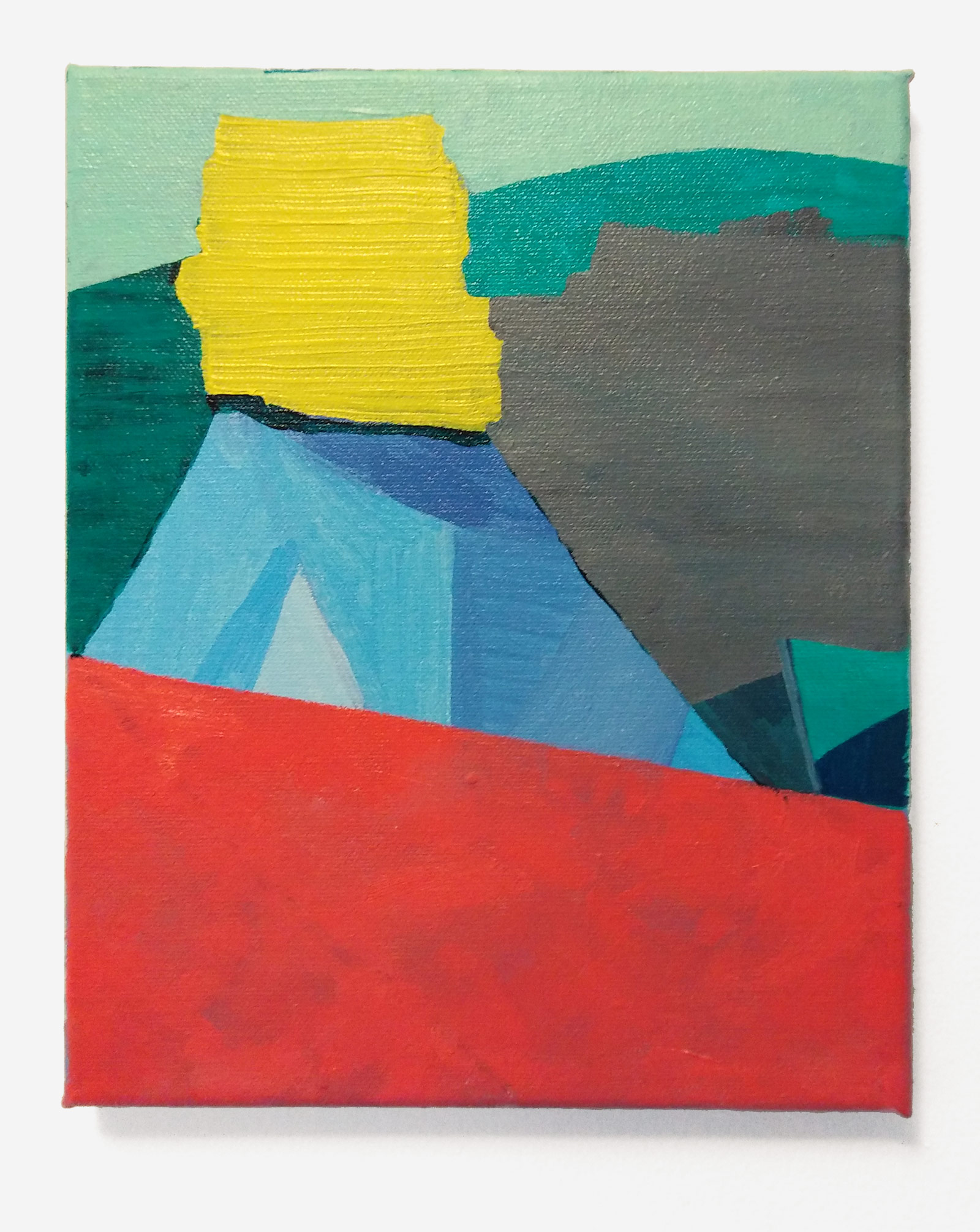
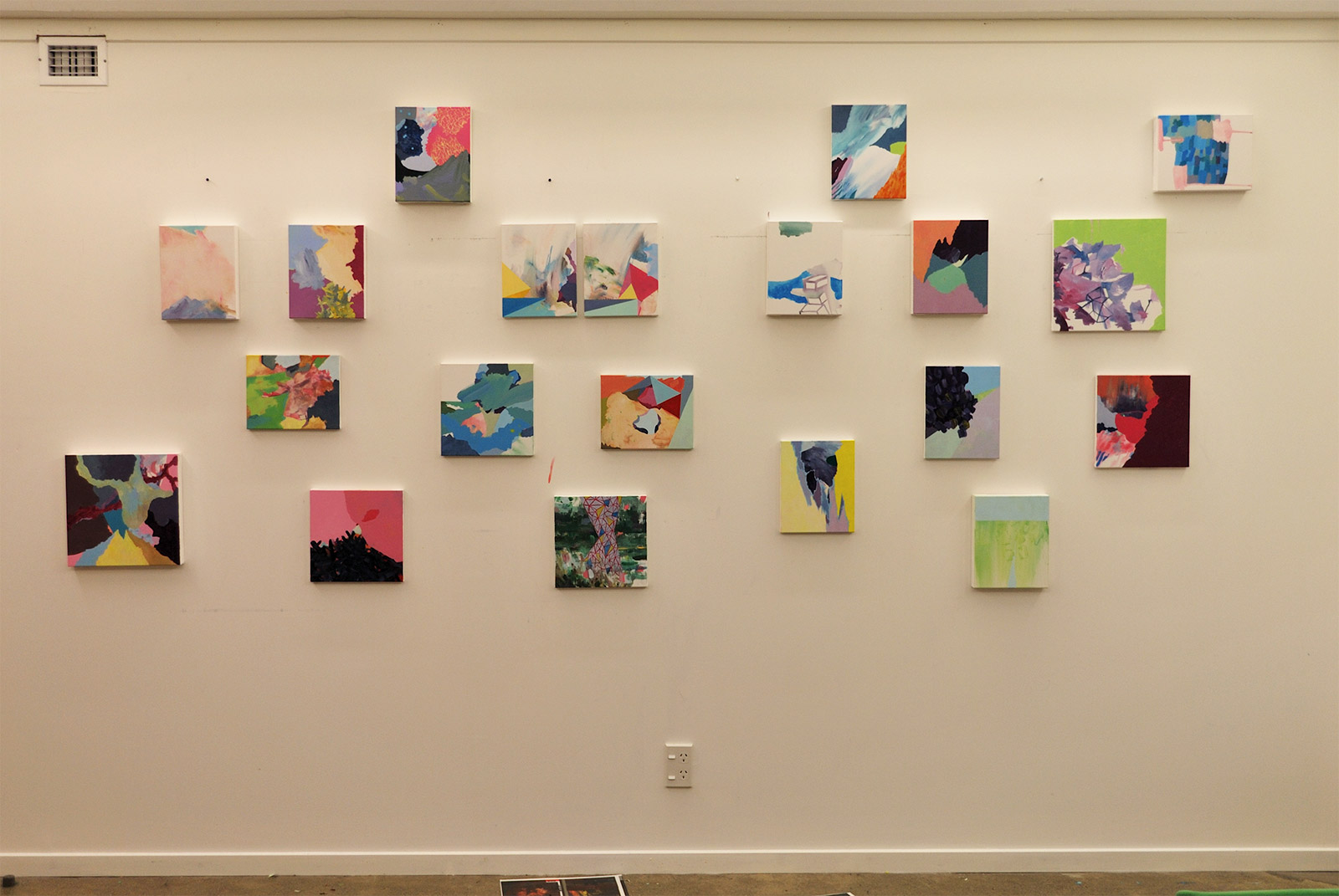
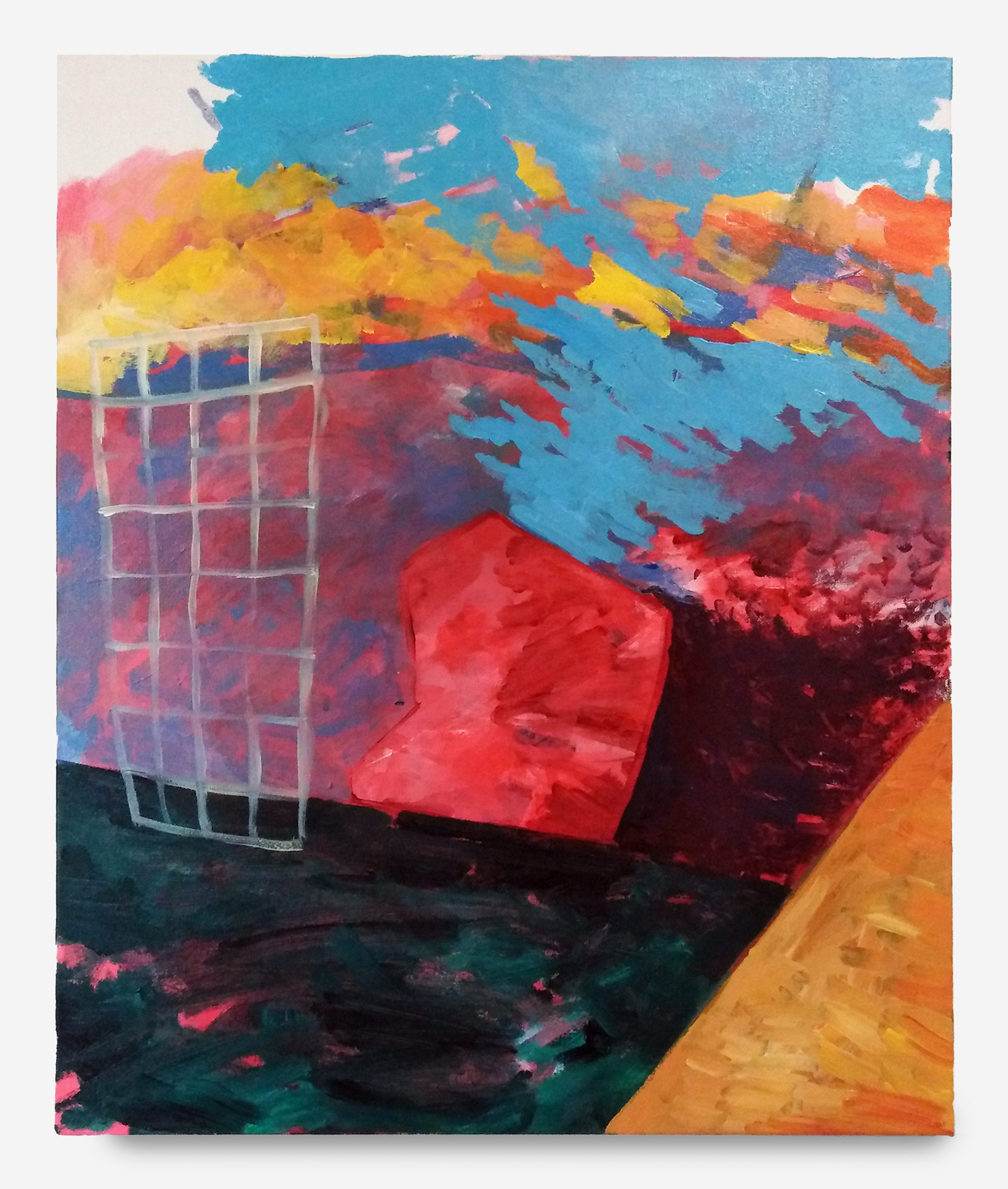
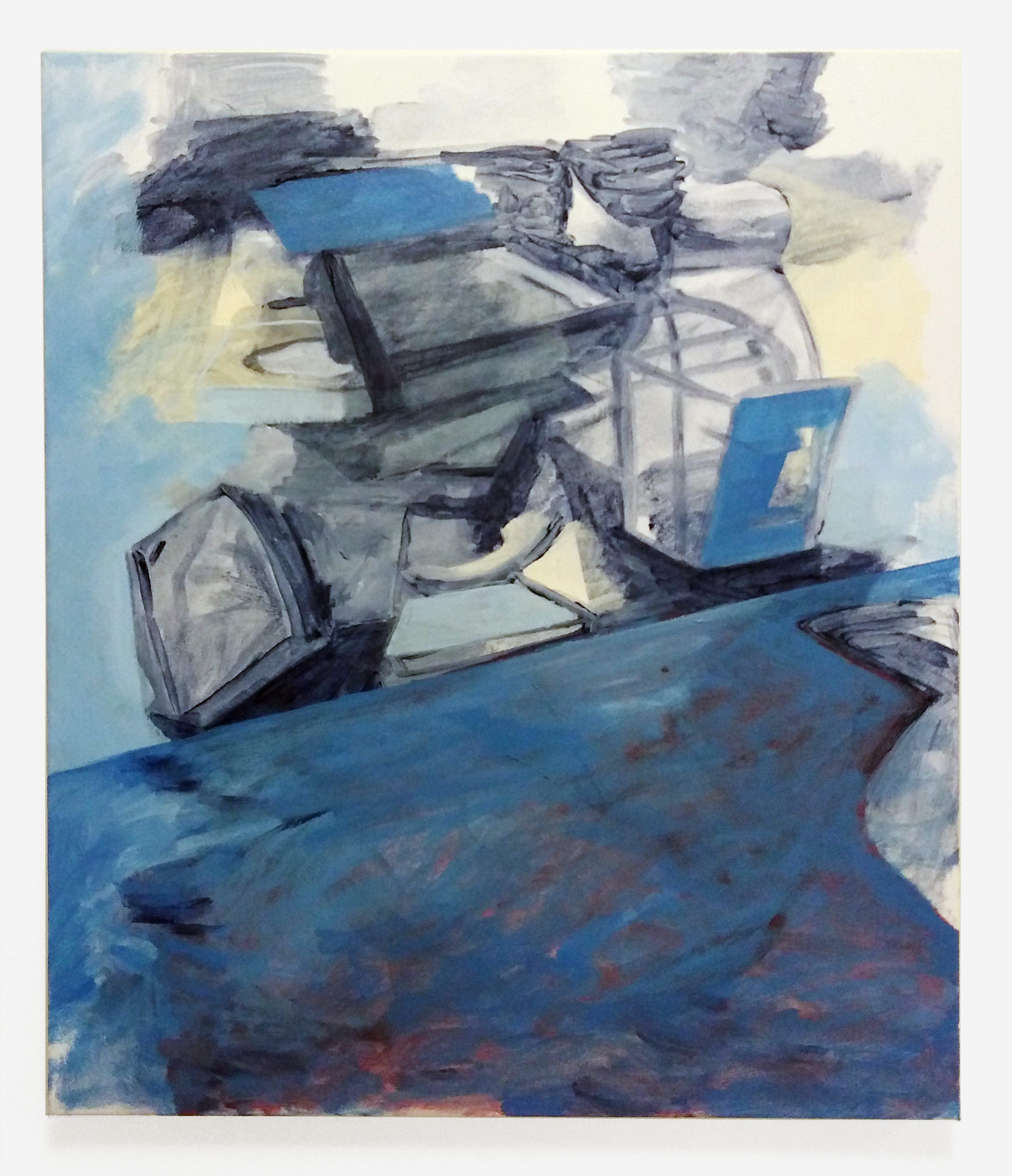 Working this week I’ve been reminded of how different the process of making these new paintings is to the way I make my hard edge paintings.
Working this week I’ve been reminded of how different the process of making these new paintings is to the way I make my hard edge paintings.